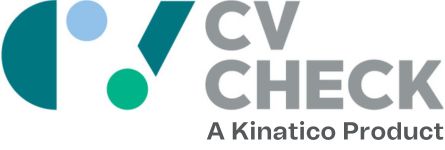Is Heston Russell diverse? If your idea of diversity is based primarily on physical attributes, you would be tempted to say no. The dynamic leadership consultant and Head of Australian Operations for Barry’s Bootcamp is 34 years old, Caucasian, male; in short, he would be passed over by most hiring managers working under a mandate to source diverse candidates.
But recruiters who rely on factors such as skin colour, age, or gender are applying the concept of diversity at the most superficial level.
“It’s easy to fall into the trap of ‘lazy diversity’,” says Heston. “The HR function may be tasked with increasing an organisation’s diversity, but if they’re not putting in the time to look beyond candidates’ superficial layers, they’re missing the point.”
Why workplace diversity is important
An ever-growing body of research has proven the benefits of diversity for organisations of every size. Managers of diverse workforces gain access to a variety of perspectives, higher levels of innovation, improved company reputation and (last but not least) increased profits. In short, the theory goes that an office full of people who have come from similar geographies, with similar upbringings, education, life and work experiences, will have very similar perspectives and are unlikely to have significantly different cognitive processes.
Bringing diverse employees into the mix (and ensuring they are included) is the key to unlocking creativity and better decision-making through constructive dissent. This is why a company’s diversity policy will often come with a shopping list of diverse attributes: ethnicity, gender, age, sexuality, and so on. But relying on these attributes to judge diversity means a company risks missing out on high-quality hires who – on the face of things – may not look diverse.
Superficial diversity is not the best approach to hiring
Take Heston himself. The former commando officer has served in East Timor, Afghanistan and Iraq, worked with heads of missions across the Asia-Pacific, deployed with U.S. special forces and run elite training and development courses for the military before stepping across to management consulting.
“I’ve seen some interesting stuff,” he says, “and that background has given me a tremendous amount of out-of-the-ordinary life experience that grants me a different perspective from the average corporate employee who followed the usual school-university-office-job career path. But employers wouldn’t know this unless they took the time to dig a bit deeper to find out about my background, then connect the dots between a diverse career path and their internal diversity targets.”
HR managers who hire for diversity for diversity’s sake typically treat diversity as a box-ticking exercise and have a shallow definition of what it means to be diverse. By failing to put in the time and effort to understand a candidate’s history, they risk:
- Missing out on diverse candidates who do not look diverse on the surface.
- Hiring candidates who look diverse but are unlikely to bring new perspectives to the table.
- Seeding resentment among existing employees who see a double-standard taking place when diverse employees are hired or promoted ahead of more qualified candidates. Affects the credibility of Recruitment and HR.
- Undermining a culture of meritocracy.
- Losing sight of the reason the company is seeking diversity in the first place.
The alternative: focusing on values
Instead of relying on superficial diversity, Heston recommends focusing upon the values a candidate prioritises and how well they match with your organisational values. “An employee’s background and experience create their values; values are the lens through which they solve problems and interact with people.” Values can be split into two groups:
- Core values: Does the candidate possess the same values as those held by your company? Common company values may include respect, accountability and integrity. Without these, it’s likely the candidate will be a poor cultural fit.
- Marginal values: What additional values or personal morals can the candidate bring to the table? Marginal values are unique to every individual and a true source of diversity for organisations.
“We try to find people with diverse professional experience along with diverse personal emotional experience, because values occur where our professional and personal experiences meet,” says Heston. “Their values firstly must align with the organisation’s core cultural values, but it’s the other values outside of that core set where you really derive diversity and value.”
How to hire for values?
Once an interviewer has established whether a candidate will be able to do the job, the hardest part lies in determining whether the candidate possesses the core and marginal values your organisation needs.
1. Ask the right interview questions
“It’s that org-fit-check, that culture-check,” says Heston. “Ask them what they think of the values of your company, what they mean to them and why they think they are important. You can use your company values to structure this part of the interview.”
Construct a values snapshot of the candidate through the use of behavioural interview questions such as: “You’ve identified that ‘team’ is important. What would motivate you to demonstrate teamwork every day?”
Join the dots between the candidate’s core values and your company’s cultural values, then focus on the exciting part – dig into the candidate’s professional and personal experience to get a picture of their emotional intelligence and any marginal values that would bring diversity to your team.
2. Take a closer look at your applicants’ CVs
In high-volume roles, it’s understandable that many recruiters are guilty of skim-reading CVs to quickly check that they contain the essentials called for in the job description, while disregarding other information as irrelevant. But with a careful read, a candidate’s CV can reveal a great deal about their life experience and background that potentially makes them a diverse thinker. Look for:
- Career gaps: Traditionally seen as a negative, a career gap may actually indicate the candidate has a richer life experience than others. Did they spend their time immersed in a different culture overseas? Perhaps they dedicated their time to volunteering and picked up valuable new perspectives by doing so.
- Interests and hobbies: Often treated as an unimportant footnote at the bottom of a CV, the hobbies and interests section could contain clues as to the candidate’s personal background.
- “Irrelevant” experience: Candidates may be tempted to leave out past roles that have little apparent relevance to the job being applied for, but again, these can be an indicator of a diverse experience. No matter what the job or industry may be, the candidate will have picked up different perspectives and transferrable skills that could potentially benefit your organisation.
Don’t just rely on the CV. If the candidate makes it to the interview round, recruiters should take the opportunity to dig deeper into these indicators of a diverse life experience.
Remember, diversity is more than skin-deep. Unearthing true diversity and a person’s marginal values takes work but will ultimately pay off when your organisation reaps the benefits of diversity.
About Heston Russell
Heston Russell is a Leadership, Strategy & Operations Expert Coach, specialising in developing and testing High Performance Teams, Leaders & Culture. His background includes over 16 years’ service in the Military including nearly a decade in the Special Forces including many operational deployments around the world. Heston has also played a leading role in the development and expansion of a number of international companies throughout the Asia-Pacific Region. Today, he draws upon his vast experiences working within high threat environments and solving complex problems.





